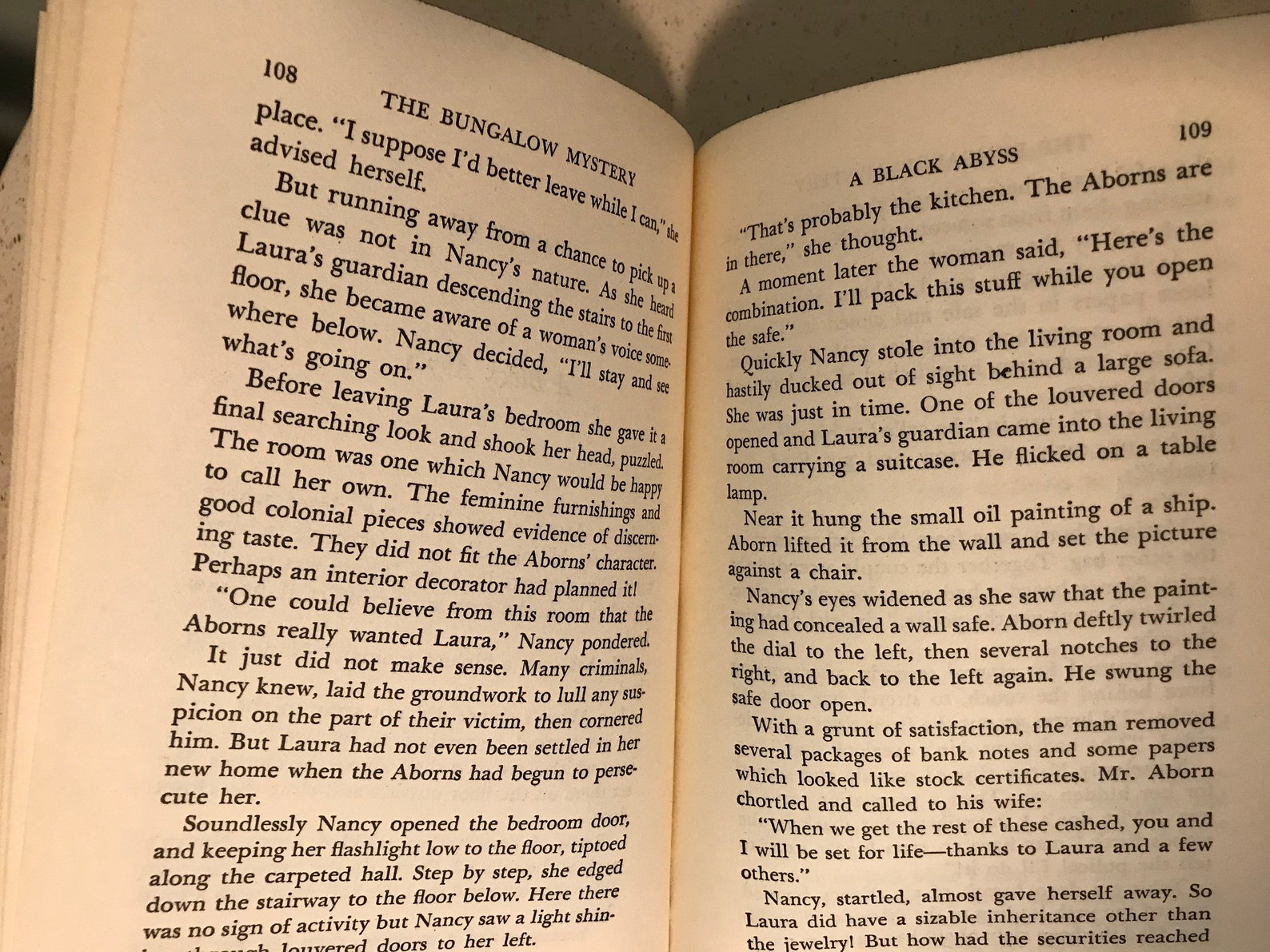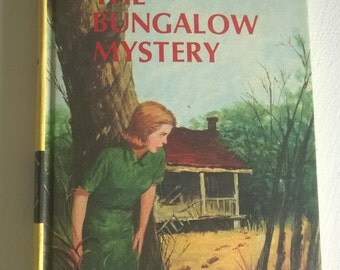



Overall a VG+/FINE- book in VG-/VG condition DJ (price clipped) of a Nancy Drew hardcover First Printing of the revised or 2nd dust jacket artwork. Dust Jacket has sliver losses at spine tips & at flap crease corners otherwise no chipping, tearing or creasing, slight wear to spine tips & to front flap crease & to left/right on spine, slight edge wear, no soiling or staining, just of dust rubbing to white rear panel, almost no spine sun fading.

Lists: Dust Jacket Front Flap: Wooden Lady (issue point for 1st printing of revised cover art) Dust Jacket Rear Flap: Dana Girls - Mysterious Fireplace Dust Jacket Back Cover: Judy Bolton - Stone Lantern Book front lists: no internal lists Book has no creased page corners, orange top stain is without fading or drop spots, slight age darkening to outer page edges (no dust soiling/foxing), endpapers are clean and free from any tape residue, no tearing or splitting of page block from internal hinges, no former owner's markings or used bookseller stamps/stickers inside, no wear to board edges, hint of shelf wear board corners & spine tips, age darkening to outer page edges (poor paper quality), tiny spot on board otherwise no soiling or staining to boards, no color wear or surface color tears to boards, no bumped board corners. NANCY DREW MYSTERY STORIES #3 - THE BUNGALOW MYSTERY by CAROLYN KEENE (pen name of Mildred Wirt Benson), published by Grosset & Dunlap, copyright 1930 (original 25 chapters), 1950B-44 printing - FIRST PRINTING OF THE 2ND "REVISED" DUST JACKET COVER ART (per Farah's Guide - guides for $186), orange "silhouette" endpapers, light blue boards with orange lettering, second or "revised" dust jacket cover art by Bill Gillies (also referred to as "wraparound" art as the front cover illustration wraps onto the spine - as distinguished from the original "white spine" cover art). In “A New Focus for Recovery,” the author suggests that recovery can function most effectively through both identifying the trauma at the heart of someone’s struggles, and learning how to both control psycho-emotional reactions during the reliving of.Hardcover. He outlines the goals of treatment (which all boil down to finding ways of living healthily and safely in the present) and outlines how the next several chapters are going to consider ways to achieve those goals in detail. Author van der Kolk then prologues the chapter with the suggestion that healing trauma is not about changing the past experience, but teaching people how to deal with present-day experiences arising from the past. “Healing from Trauma: Owning Your Self” begins with a tongue-in-cheek quote from a poem referencing how many people mock talk therapy for making those who utilize it self-centered.


 0 kommentar(er)
0 kommentar(er)
